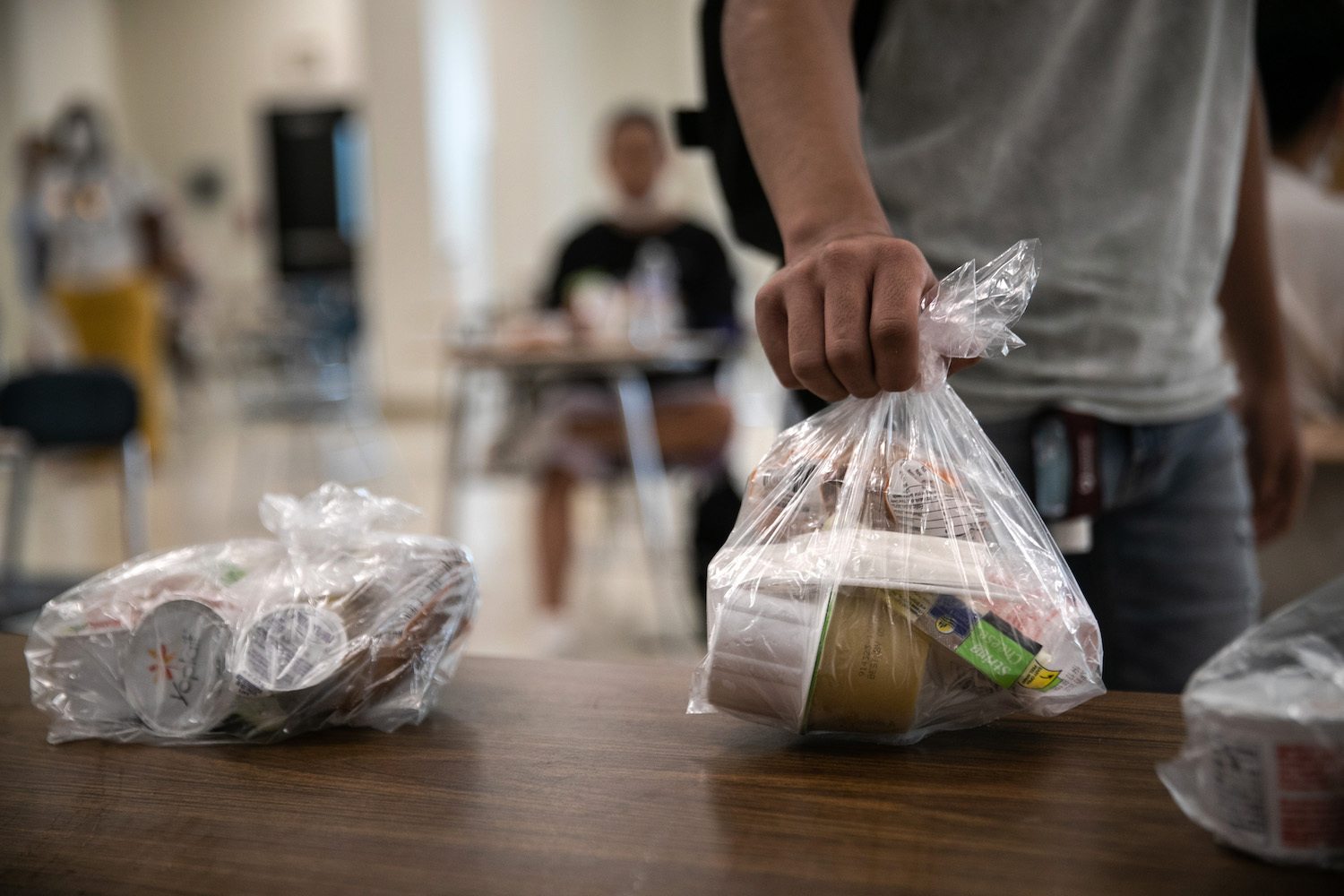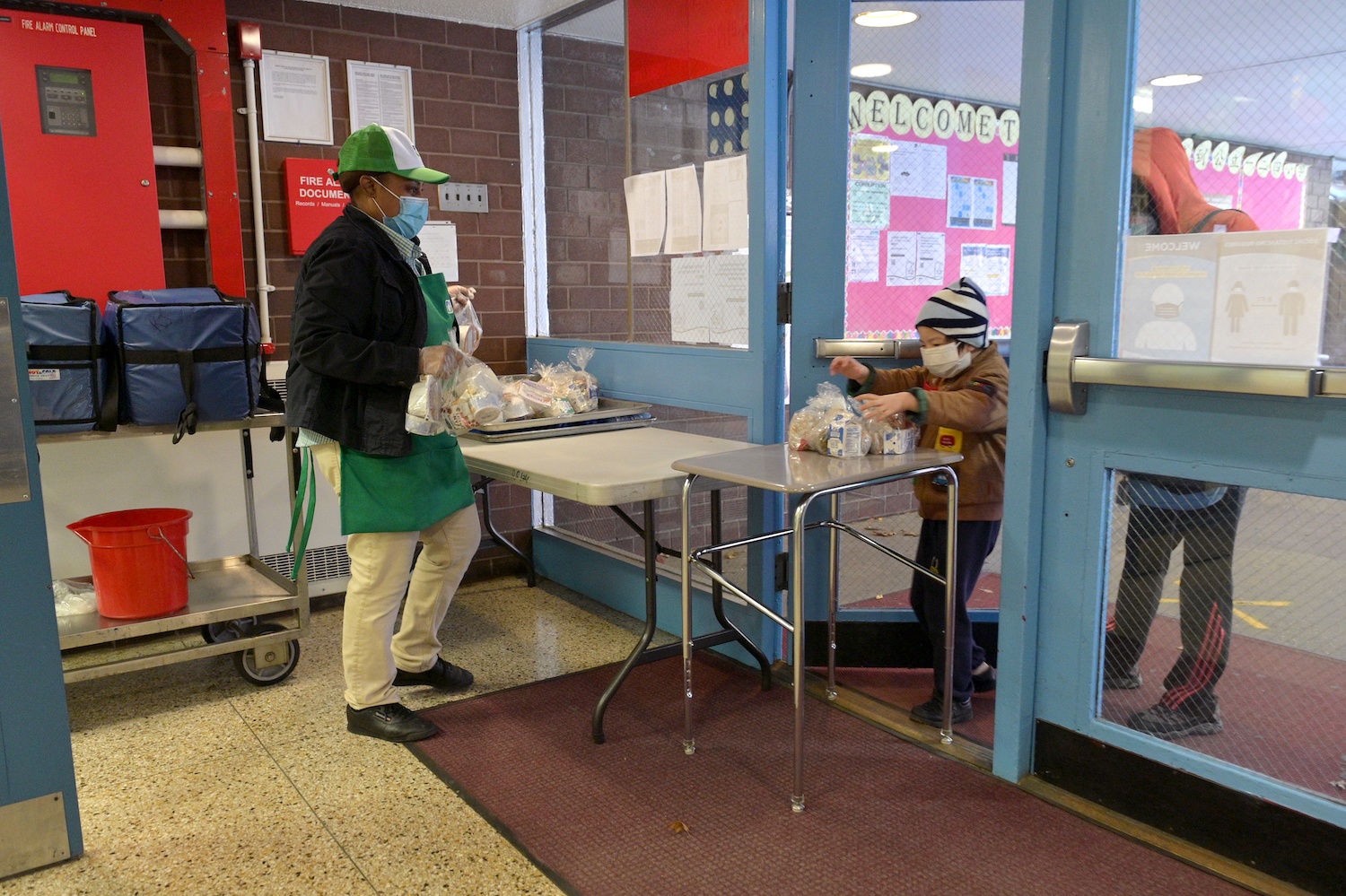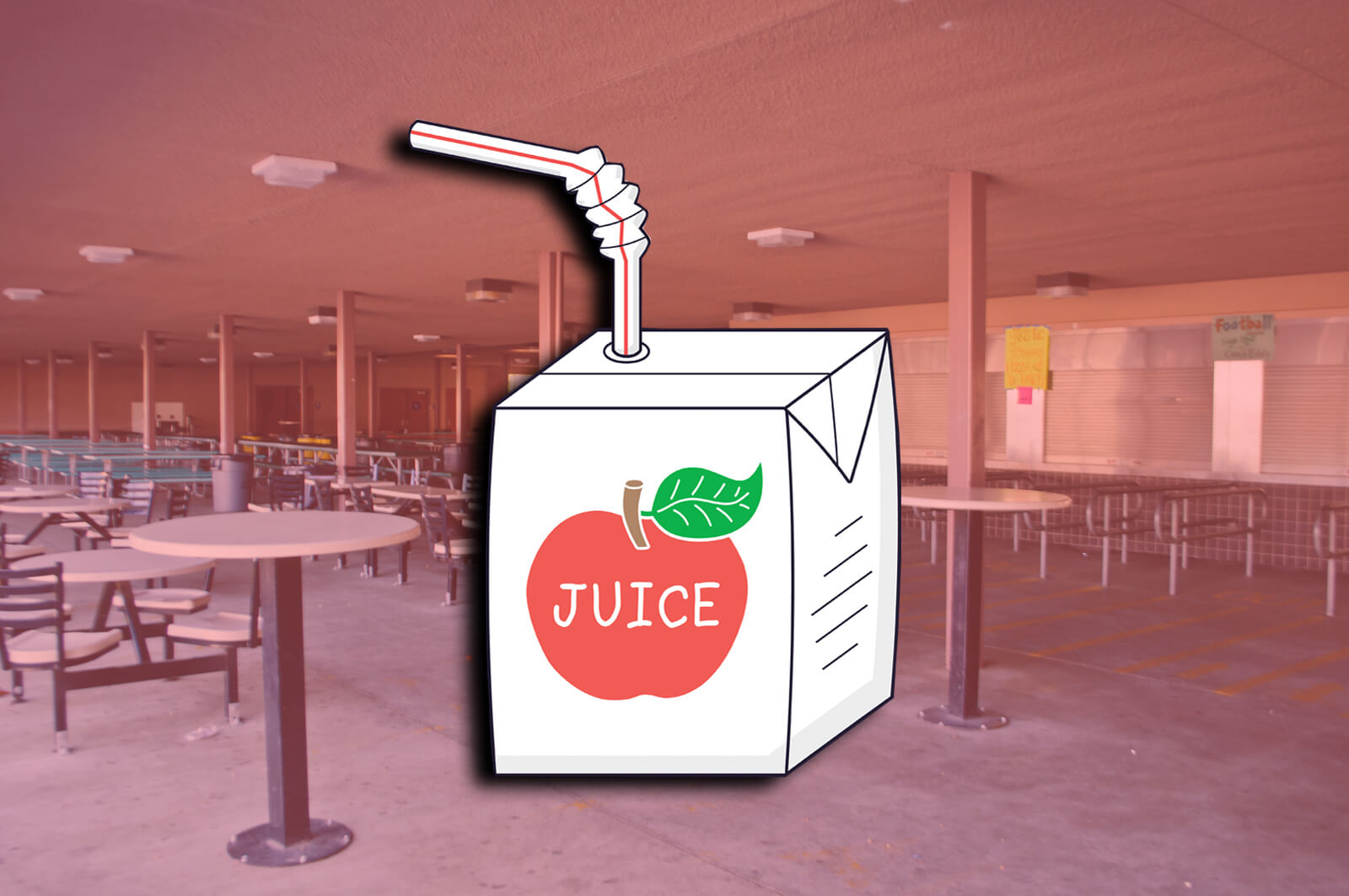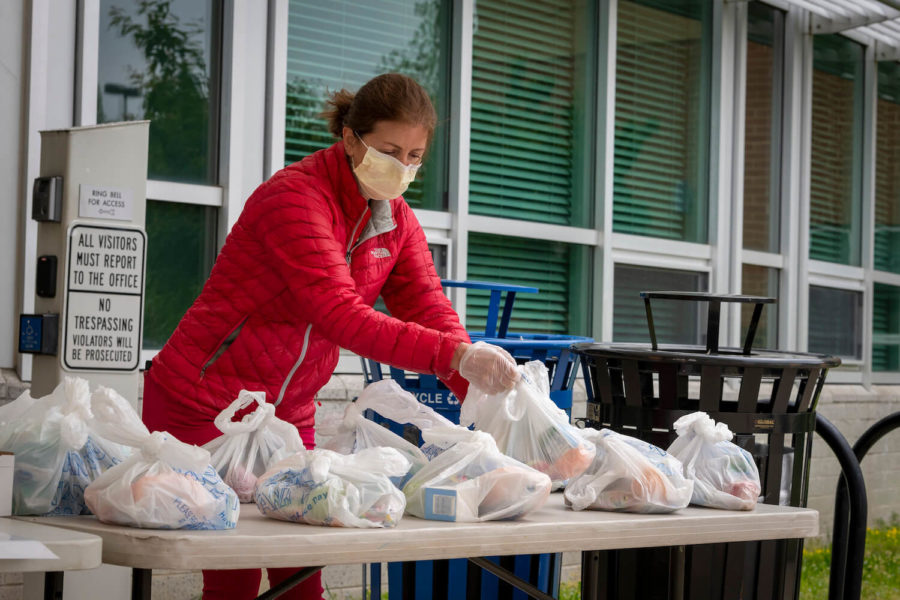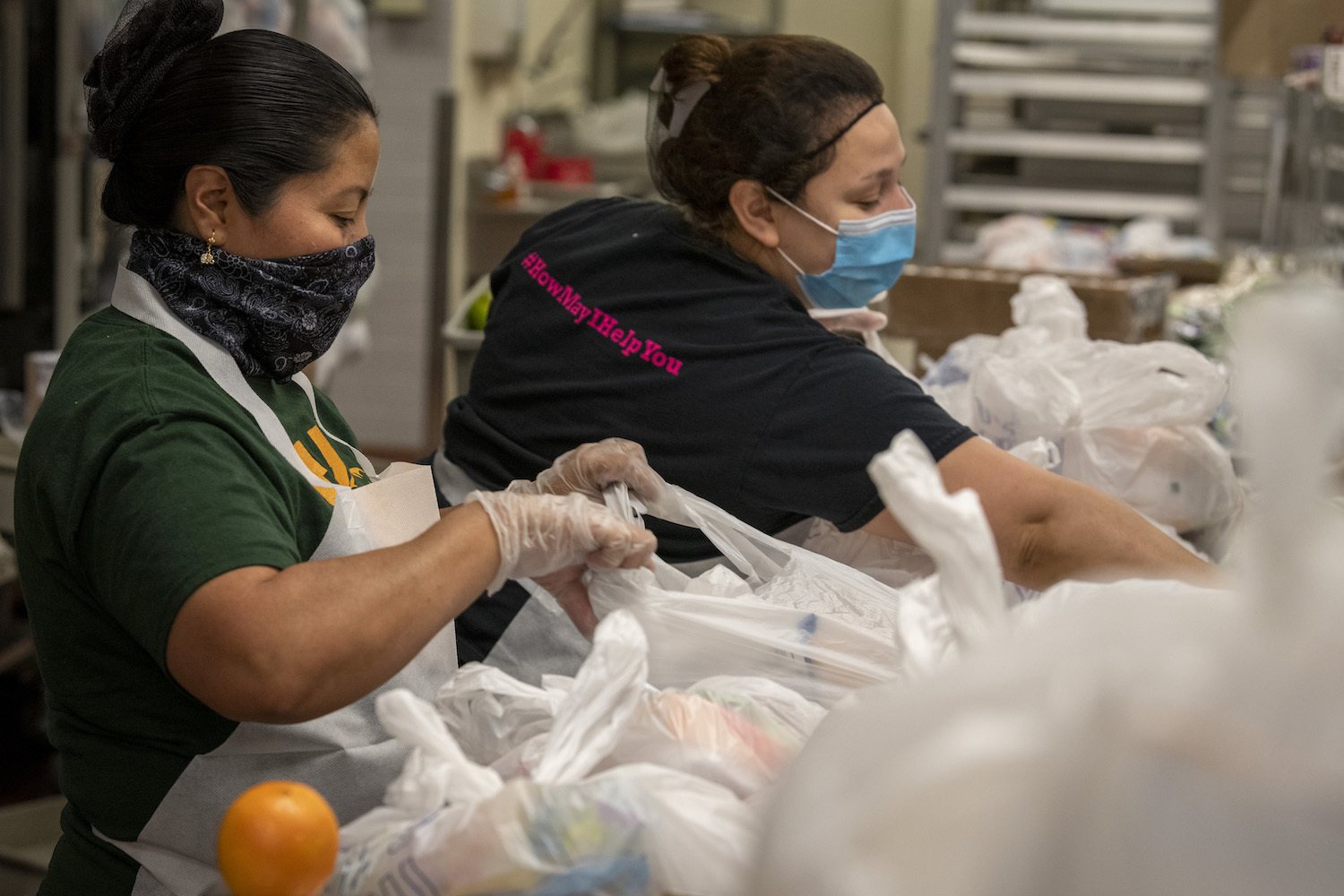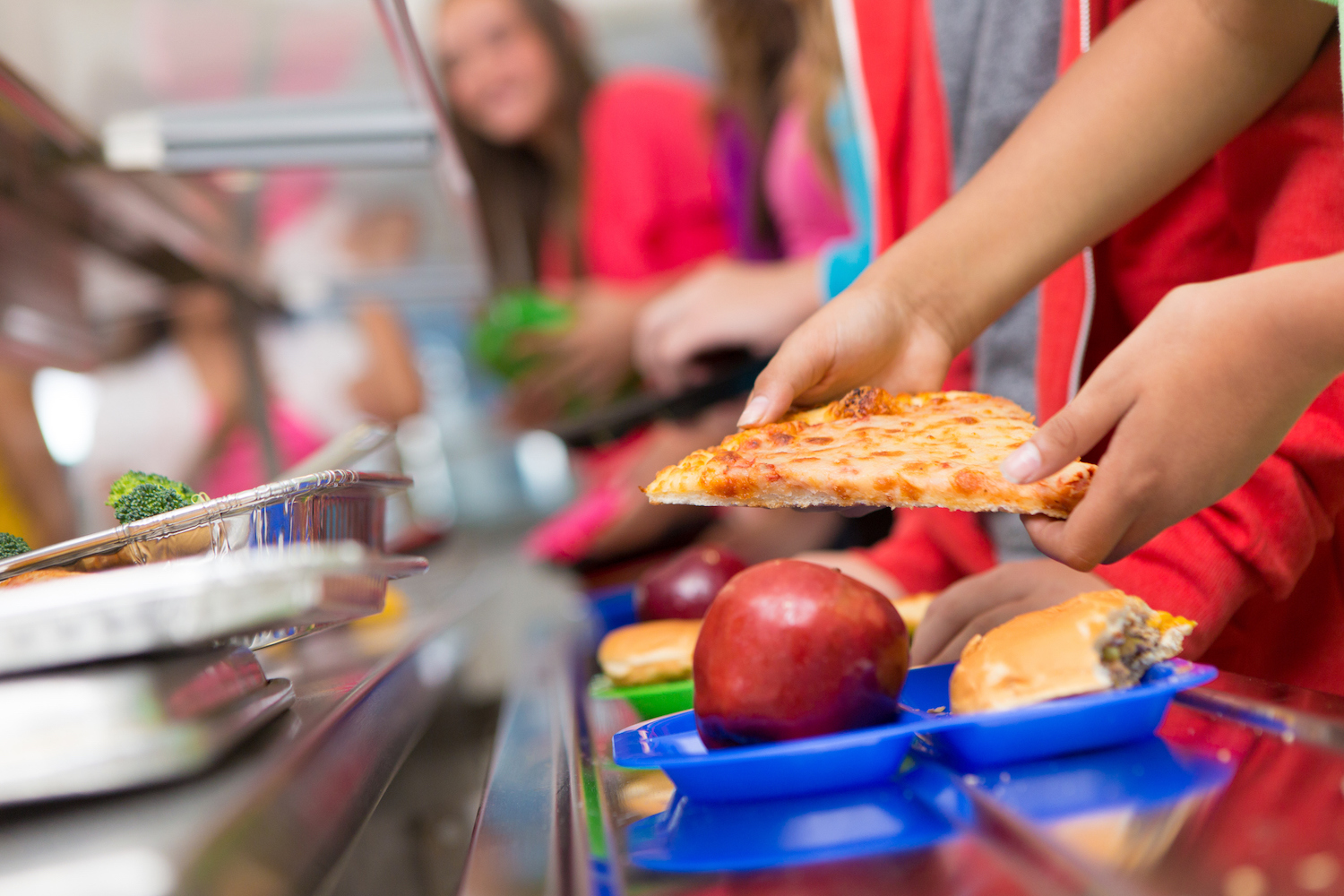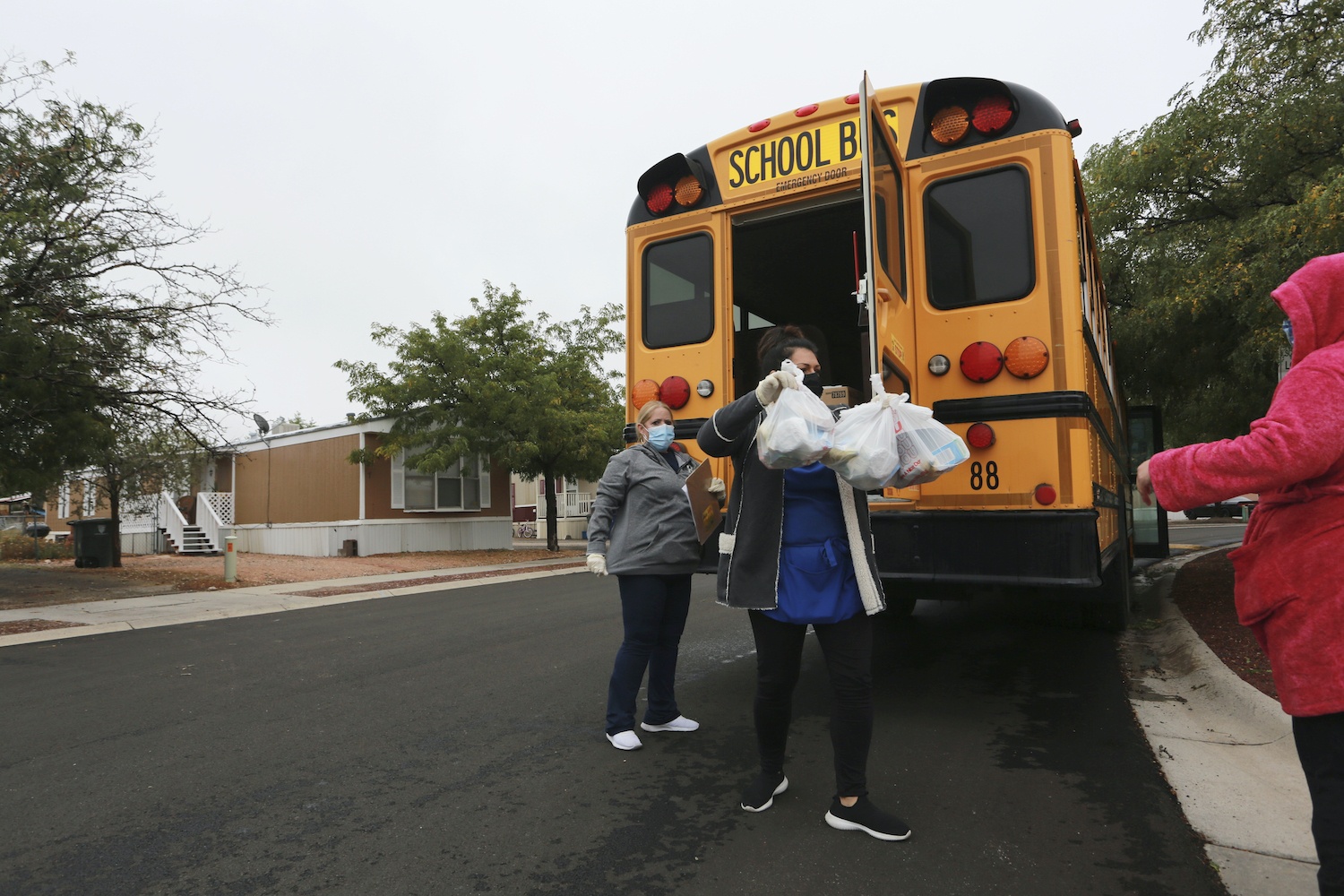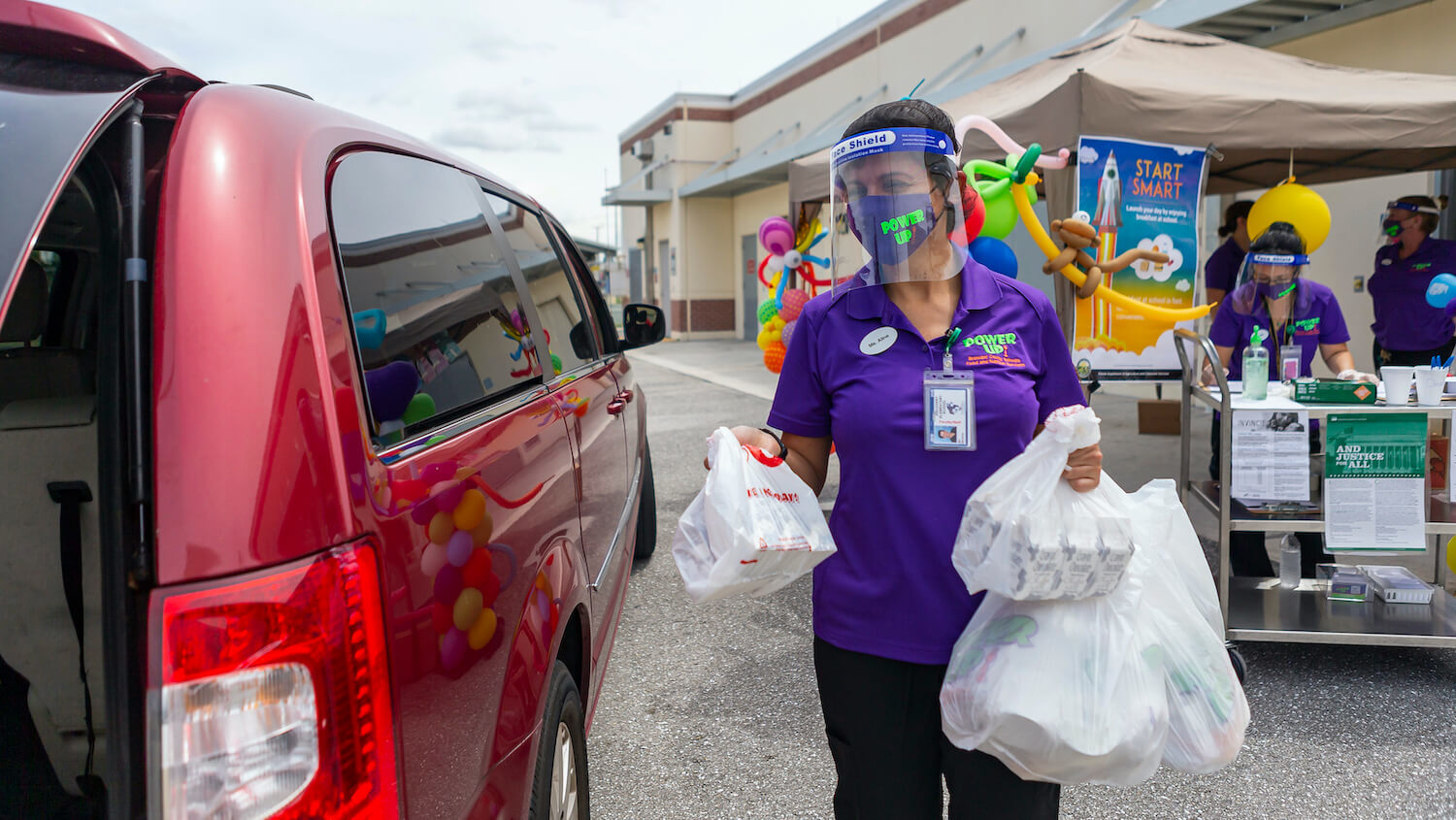Many states use free lunch applications to measure student poverty. Now that families don’t need to apply, a drop in funding may follow.
Last fall, in response to Covid-19-related upheaval, the Department of Agriculture (USDA) announced that it would allow schools to serve free meals to all students through the end of the 2020-21 academic year. The move made it significantly easier for cafeterias to get food to kids during the pandemic, in part by eliminating the need for families to fill out applications for free or reduced-price lunches.
But there appears to be an unexpected downside to this well-intentioned waiver: Most states rely on free lunch application counts to help inform school funding decisions. Without these numbers, schools with higher rates of student poverty may see a decrease in revenue not only next year, but in the years to come.
Let’s back up a bit: States typically allocate money to schools based on student poverty, an approach that attempts to bridge disparities in local funding. In more than 30 states, free lunch participation rates factor into these calculations in some way, according to an analysis by the Urban Institute. As a result, when fewer parents fill out free lunch applications, funding can tick down even if students’ needs haven’t changed.
“There’s no real motivating factor for a family to fill out that meal application in the traditional sense of what it was used for.”
That concerns Monica Deines-Henderson, food service director in the town of Falcon, Colorado. She estimates that approximately a quarter of students in her district qualify for free or reduced lunch. This year, however, she has seen an eight percent decrease in the number of families filling out the paperwork for it, which she believes may be partially due to USDA’s free meals waiver.
“There’s no real motivating factor for a family to fill out that meal application in the traditional sense of what it was used for,” Deines-Henderson said. She noted that most parents have continued to fill out the paperwork thanks to the ancillary benefits it entails, like discounts on school fees and standardized testing costs. The application is also required if families want to access Pandemic-EBT, food benefits meant to make up for lost school meals.
But an eight percent drop off in applications can still significantly impact the school’s bottom line. In Colorado, school districts receive between 12 to 30 percent more funding for what the state calls “at-risk” students, a label determined by participation in the free lunch program. This funding translates to a wide range of additional resources for students.
Because the state calculates funding based on a three-year average, the impacts of this year’s drop off will be felt beyond the next school year alone.
“Overall, [this funding] helps to provide more academic programming and support,” Deines-Henderson said. “It could be more books, it could be more educational support, more tutor time, it could be software programing.”
Now, schools across the country are reporting that they face a similar funding gap, raising renewed questions about whether some states are overly dependent on lunch status as a measure for poverty. The issue had been raised even before the pandemic, as more and more schools opted to provide free meals to all students—pushing states to find alternative income metrics.
So far, Covid-19 has only worsened that dynamic. In California, schools get extra revenue based on what the state calls their “unduplicated pupil count,” which includes students who qualify for free lunch, those in foster care, and English language learners. At the Mount Diablo Unified School District in Concord, California, the number of students who fall into this broad category has dropped by almost 1,400 students, chief business officer Lisa Gonzales explained in a recent Youtube video.
That translates to a revenue loss of roughly $1.12 million, she estimated. And because the state calculates funding based on a three-year average, the impacts of this year’s drop off will be felt beyond the next school year alone.
“Meal applications can be invasive, so if families can avoid filling out the application, they will.”
“We really thought that in the fall of 2020 there was going to be this huge surge of families filling out meal applications, and that didn’t happen,” said Dominic Machi, the district’s director of food and nutrition services. He thinks that USDA’s free meals waiver was one factor contributing to that decline.
“The waiver actually became a deterrent,” he said. “Meal applications can be invasive, so if families can avoid filling out the application, they will.”
Compounding that, he added, was the political climate under the Trump administration, which likely dissuaded some families of mixed immigration status from applying for free meals.
Other pandemic-related barriers have also made it harder for schools to do free meal application outreach, said Tom Sauvage, assistant superintendent of the Meramec Valley R-III School District in Pacific, Missouri. Social distancing restrictions meant that the district wasn’t able to host traditional school registration events, where officials collect a lot of paperwork from parents.
Sauvage estimates that the number of students participating in the free lunch program has dropped from 47 to 42 percent this year, which would translate to a loss of between $400,000 to $500,000 in revenue. However, because the state allows schools to use the highest participation rate possible within a three-year window, Sauvage said that this year’s drop off won’t likely have an immediate effect on funding. If the pandemic drags on, however, it could be more consequential: “The concern moving forward is, if our free and reduced lunch numbers continue to stay down, will we at some point have to use this year’s numbers?”
“We’re not really capturing the true spectrum of need out there by relying just on this one piece of data.”
For some school officials, funding formulas that rely on free lunch application rates as a proxy for poverty have always been inadequate. The pandemic has simply made that more clear.
“We’re not really capturing the true spectrum of need out there by relying just on this one piece of data,” said Deines-Henderson, noting that families decline to apply for free lunch for numerous reasons, from stigma to information barriers.
Additionally, more schools in recent years have adopted programs that provide free meals for all students, rendering lunch applications obsolete. To fill that information gap, some states have already begun to broaden the criteria they consider when estimating student poverty, according to a 2018 Urban Institute policy analysis. Massachusetts, for example, looks at household participation in a wide range of benefits programs, including food stamps, temporary cash assistance, and Medicaid. Some policy advocates have suggested that other states do the same, and even look at further metrics like tax filings.
As for the current dilemma that schools are in, it’s possible that some educational agencies will recognize that meal applications are a particularly inaccurate reflection of student poverty under the pandemic circumstances. But the officials I spoke with didn’t express much confidence that states had any immediate plans to offset the impact that skewed free lunch data would have on future funding.
That doesn’t just mean a decline in funding compared to last year. It means a larger overall funding gap, as schools need more resources to cope with what they say is much higher student poverty due to the pandemic.
“We know that we’ve got more families struggling, more students who are struggling,” Gonzales said in her explainer video. “Ideally what would have happened, with the economy the way that it is, is that more students would have turned in applications and qualified.”
